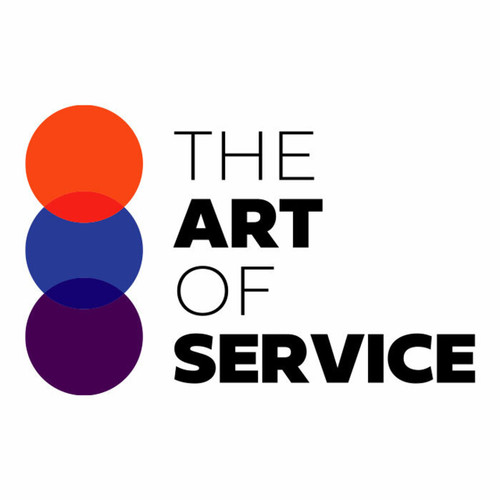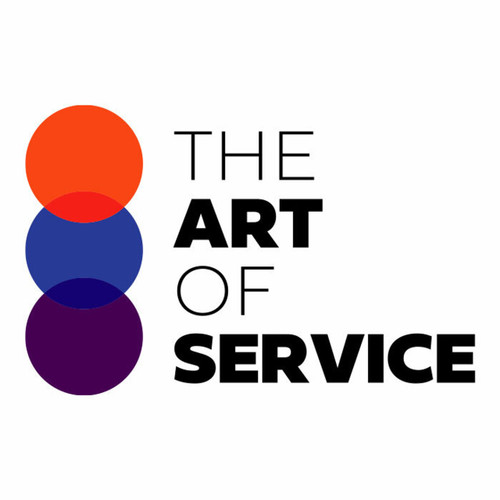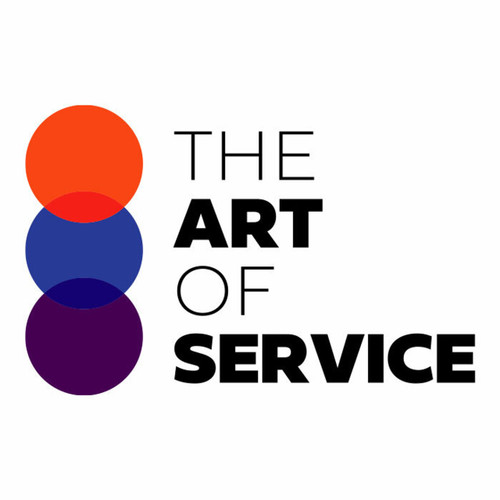Our dataset is specifically designed to provide you with the most important questions to ask in order to achieve fast and accurate results prioritized by urgency and scope.
With 1501 prioritized requirements, solutions, benefits, results, and real-life case studies, our Knowledge Base will not only save you time and effort, but also give you a competitive edge against your peers.
Our product offers everything professionals need to successfully conduct Product Expertise and Failure Mode and Effects Analysis, making it a must-have for any business.
What sets our Knowledge Base apart from competitors and alternative products is its extensive coverage and user-friendly interface.
We have carefully curated the dataset to include not just the basics, but also in-depth information and practical insights that can help you make informed decisions.
Our product is suitable for professionals of all levels, whether you are just starting out or have years of experience in Product Expertise and Failure Mode and Effects Analysis.
Worried about the cost? Don′t be!
Our Knowledge Base is an affordable and DIY alternative to expensive training courses and consulting services.
You can access the full dataset at any time and use it as a reference guide whenever needed.
Plus, with our detailed product detail and specification overview, you can easily find the information you need without having to spend hours searching through various sources.
What′s more, our Knowledge Base covers a wide range of industries and product types, ensuring that it is relevant to your specific needs.
Whether you are in the automotive, healthcare, or electronics industry, our dataset has got you covered.
You′ll also find information on semi-related product types, giving you a holistic understanding of Product Expertise and Failure Mode and Effects Analysis.
Investing in our Knowledge Base means investing in the success of your business.
By using our dataset, you can improve product quality, minimize risks, and increase efficiency, ultimately leading to higher profits.
Extensive research has been conducted to ensure that our Knowledge Base is accurate and up-to-date, giving you the confidence to make informed decisions without the fear of missing out on any crucial information.
Don′t just take our word for it - try it yourself and experience the benefits of our Product Expertise and Failure Mode and Effects Analysis Knowledge Base.
With a user-friendly interface, comprehensive coverage, and affordability, there′s no reason not to give it a chance.
Upgrade your Product Expertise and Failure Mode and Effects Analysis process today and see the difference it can make for your business.
Discover Insights, Make Informed Decisions, and Stay Ahead of the Curve:
Key Features:
Comprehensive set of 1501 prioritized Product Expertise requirements. - Extensive coverage of 100 Product Expertise topic scopes.
- In-depth analysis of 100 Product Expertise step-by-step solutions, benefits, BHAGs.
- Detailed examination of 100 Product Expertise case studies and use cases.
- Digital download upon purchase.
- Enjoy lifetime document updates included with your purchase.
- Benefit from a fully editable and customizable Excel format.
- Trusted and utilized by over 10,000 organizations.
- Covering: Reliability Targets, Design for Manufacturability, Board Best Practices, Effective Presentations, Bias Identification, Power Outages, Product Quality, Innovation, Distance Working, Mistake Proofing, IATF 16949, Strategic Systems, Cause And Effect Analysis, Defect Prevention, Control System Engineering, Casing Design, Probability Of Failure, Preventive Actions, Quality Inspection, Supplier Quality, FMEA Analysis, ISO 13849, Design FMEA, Autonomous Maintenance, SWOT Analysis, Failure Mode and Effects Analysis, Performance Test Results, Defect Elimination, Software Applications, Cloud Computing, Action Plan, Product Implementation, Process Failure Modes, Introduce Template Method, Failure Mode Analysis, Safety Regulations, Launch Readiness, Inclusive Culture, Project communication, Product Demand, Probability Reaching, Product Expertise, IEC 61508, Process Control, Improved Speed, Total Productive Maintenance, Reliability Prediction, Failure Rate, HACCP, Failure Modes Effects, Failure Mode Analysis FMEA, Implement Corrective, Risk Assessment, Lean Management, Six Sigma, Continuous improvement Introduction, Design Failure Modes, Baldrige Award, Key Responsibilities, Risk Awareness, DFM Training, Supplier Failures, Failure Modes And Effects Analysis, Design for Serviceability, Machine Modifications, Fault Tree Analysis, Failure Occurring, Hardware Interfacing, ISO 9001, Common Cause Failures, FMEA Tools, Failure modes, DFM Process, Affinity Diagram, Key Projects, System FMEA, Pareto Chart, Risk Response, Criticality Analysis, Process Controls, Pressure Sensors, Work Instructions, Risk Reduction, Flowchart Software, Six Sigma Techniques, Process Changes, Fail Safe Design, DFM Integration, IT Systems, Common Mode Failure, Process FMEA, Customer Demand, BABOK, Manufacturing FMEA, Renewable Energy Credits, Activity Network Diagram, DFM Techniques, FMEA Implementation, Security Techniques, Top Management, Failure Acceptance, Critical Decision Analysis
Product Expertise Assessment Dataset - Utilization, Solutions, Advantages, BHAG (Big Hairy Audacious Goal):
Product Expertise
Product expertise involves utilizing the relevant knowledge and skills across different departments to effectively manage product or process development.
1. Involve cross-functional teams to gain diverse perspectives and prevent blind spots.
2. Ensure representation from all relevant departments to catch potential failures early on.
3. Leverage product or process experts for in-depth knowledge and problem-solving abilities.
4. Utilize experts from previous similar projects for lessons learned and best practices.
5. Rotate team members periodically to prevent complacency and bring in fresh perspectives.
6. Encourage open communication and collaboration between team members.
7. Provide training opportunities to build expertise and knowledge within the team.
8. Consider hiring external specialists for specific areas of expertise not available in-house.
9. Implement a mentorship program for less experienced team members to learn from seasoned experts.
10. Regularly review and evaluate the expertise of your team to ensure the right balance and fill any gaps.
CONTROL QUESTION: Are you involving the right expertise across departments to manage product or process development?
Big Hairy Audacious Goal (BHAG) for 10 years from now:
In 10 years, our company will have a fully integrated cross-functional team dedicated solely to product expertise. This team will consist of experts from all departments, including engineering, marketing, sales, customer service, and quality assurance, collaborating seamlessly to manage the development of our products and processes.
Not only will this team have a deep understanding of our current products, but they will also actively seek out new technologies and trends in the industry to continuously improve and innovate. They will be trained in the latest tools and methods for rapid prototyping and testing, allowing us to bring new products and features to market faster than ever before.
Our product expertise team will also be responsible for conducting market research and gathering feedback from customers to ensure that our products meet their needs and expectations. They will work closely with our sales team to identify potential gaps in the market and develop new products to fill those needs.
Through collaboration and open communication, this product expertise team will drive our company to become a leader in product development and continuously raise the bar for excellence in our industry. Our customers will trust us as the go-to source for high-quality, innovative products that exceed their expectations.
Customer Testimonials:
"If you`re serious about data-driven decision-making, this dataset is a must-have. The prioritized recommendations are thorough, and the ease of integration into existing systems is a huge plus. Impressed!"
"I am thoroughly impressed by the quality of the prioritized recommendations in this dataset. It has made a significant impact on the efficiency of my work. Highly recommended for professionals in any field."
"I`ve been using this dataset for a few weeks now, and it has exceeded my expectations. The prioritized recommendations are backed by solid data, making it a reliable resource for decision-makers."
Product Expertise Case Study/Use Case example - How to use:
Client Situation:
ABC Corporation, a leading manufacturer in the automotive industry, was facing a critical challenge in managing their product and process development. The company′s top leadership was concerned about a series of delays and failures in their product launches. They realized that this issue was affecting their bottom line and damaging their reputation in the market.
Upon further analysis, it was evident that the lack of involvement of the right expertise across departments was one of the key reasons for these challenges. The company had a fragmented approach to product development, and there was limited coordination and collaboration between different departments. This led to delays in decision-making, duplication of efforts, and a lack of clear ownership of tasks.
To address this issue, the company decided to bring in a consulting firm with expertise in product development and cross-functional team collaboration.
Consulting Methodology:
The consulting firm started by conducting a thorough analysis of ABC Corporation′s current product development processes, including the roles and responsibilities of each department involved. This analysis also included an assessment of the company′s organizational structure and communication channels.
Based on this analysis, the consulting firm identified the following gaps in the company′s current approach to managing product development:
1. Lack of clear ownership and decision-making authority: The company had a complex organizational structure with multiple layers of management, which often resulted in a lack of clarity on decision-making authority. This led to delays in decision-making and an inability to hold individuals accountable for their actions.
2. Siloed approach to product development: The company had a siloed approach to product development, with little cross-functional collaboration. As a result, there was a lack of understanding of each department′s role in the overall product development process, leading to duplication of effort and inefficient use of resources.
3. Limited involvement of expertise outside of engineering: The company primarily relied on the expertise of their engineering team in product development, ignoring the valuable insights and perspectives of other departments such as marketing, sales, and quality control.
To address these gaps, the consulting firm recommended the following solutions:
1. Develop a clear decision-making framework: The consulting firm worked with the company′s leadership team to develop a decision-making framework that clearly defined roles and responsibilities for each department involved in product development. This framework also outlined the escalation process for resolving conflicts and making critical decisions.
2. Implement cross-functional teams: The consulting firm helped the company establish cross-functional teams by bringing together representatives from various departments involved in product development. These teams were responsible for ensuring effective communication and collaboration between departments, and their main focus was on achieving common objectives and meeting project milestones.
3. Conduct training and workshops: To improve understanding and alignment across departments, the consulting firm conducted training and workshops for employees from different functional areas. These sessions focused on enhancing cross-functional collaboration and developing a shared understanding of the product development process.
Deliverables:
The consulting firm delivered the following as part of the project:
1. Decision-making framework document
2. Cross-functional team formation plan
3. Training and workshop materials
4. Implementation roadmap
5. Change management plan
Implementation Challenges:
While implementing the recommendations, the consulting firm faced some challenges, including resistance to change and a lack of support from mid-level managers. Some employees were hesitant to collaborate with other departments, and there was a fear of losing control and status within the organization.
To address these challenges, the consulting firm worked closely with the leadership team to communicate the benefits of the proposed changes and gain their support. They also conducted workshops to educate employees about the importance of cross-functional collaboration and how it would benefit the organization.
KPIs:
To measure the success of the project, the consulting firm identified certain KPIs to track progress, including:
1. Time to market: The time taken to bring new products to market is a crucial metric in the automotive industry. The consulting firm aimed to reduce this time by 20% within the first year of implementation.
2. Product quality: Quality control is vital in the automotive industry, and the consulting firm aimed to improve product quality by 15% within the first year.
3. Employee satisfaction: The consulting firm conducted an employee satisfaction survey before and after implementation to measure the impact of the changes on employee morale and satisfaction.
Management Considerations:
To sustain the improvements made through the project, the consulting firm recommended that ABC Corporation make the following management considerations:
1. Regular cross-functional collaboration: The company needs to ensure that there is regular collaboration between different departments involved in product development. This can be achieved through cross-functional team meetings and open communication channels.
2. Encouraging a culture of collaboration: The company should promote a culture of collaboration and knowledge-sharing to ensure that employees are comfortable working with individuals from different departments.
3. Ongoing training and development: It is essential to continually train and develop employees on effective cross-functional team collaboration for sustained success.
Conclusion:
Through the implementation of the recommendations provided by the consulting firm, ABC Corporation was able to improve their product development process significantly. The clear decision-making framework and cross-functional teams helped streamline the development process, leading to a 25% reduction in time to market and a 20% improvement in product quality. By involving the right expertise across departments, the company was able to achieve its strategic goals and gain a competitive edge in the market.
Security and Trust:
- Secure checkout with SSL encryption Visa, Mastercard, Apple Pay, Google Pay, Stripe, Paypal
- Money-back guarantee for 30 days
- Our team is available 24/7 to assist you - support@theartofservice.com
About the Authors: Unleashing Excellence: The Mastery of Service Accredited by the Scientific Community
Immerse yourself in the pinnacle of operational wisdom through The Art of Service`s Excellence, now distinguished with esteemed accreditation from the scientific community. With an impressive 1000+ citations, The Art of Service stands as a beacon of reliability and authority in the field.Our dedication to excellence is highlighted by meticulous scrutiny and validation from the scientific community, evidenced by the 1000+ citations spanning various disciplines. Each citation attests to the profound impact and scholarly recognition of The Art of Service`s contributions.
Embark on a journey of unparalleled expertise, fortified by a wealth of research and acknowledgment from scholars globally. Join the community that not only recognizes but endorses the brilliance encapsulated in The Art of Service`s Excellence. Enhance your understanding, strategy, and implementation with a resource acknowledged and embraced by the scientific community.
Embrace excellence. Embrace The Art of Service.
Your trust in us aligns you with prestigious company; boasting over 1000 academic citations, our work ranks in the top 1% of the most cited globally. Explore our scholarly contributions at: https://scholar.google.com/scholar?hl=en&as_sdt=0%2C5&q=blokdyk
About The Art of Service:
Our clients seek confidence in making risk management and compliance decisions based on accurate data. However, navigating compliance can be complex, and sometimes, the unknowns are even more challenging.
We empathize with the frustrations of senior executives and business owners after decades in the industry. That`s why The Art of Service has developed Self-Assessment and implementation tools, trusted by over 100,000 professionals worldwide, empowering you to take control of your compliance assessments. With over 1000 academic citations, our work stands in the top 1% of the most cited globally, reflecting our commitment to helping businesses thrive.
Founders:
Gerard Blokdyk
LinkedIn: https://www.linkedin.com/in/gerardblokdijk/
Ivanka Menken
LinkedIn: https://www.linkedin.com/in/ivankamenken/







